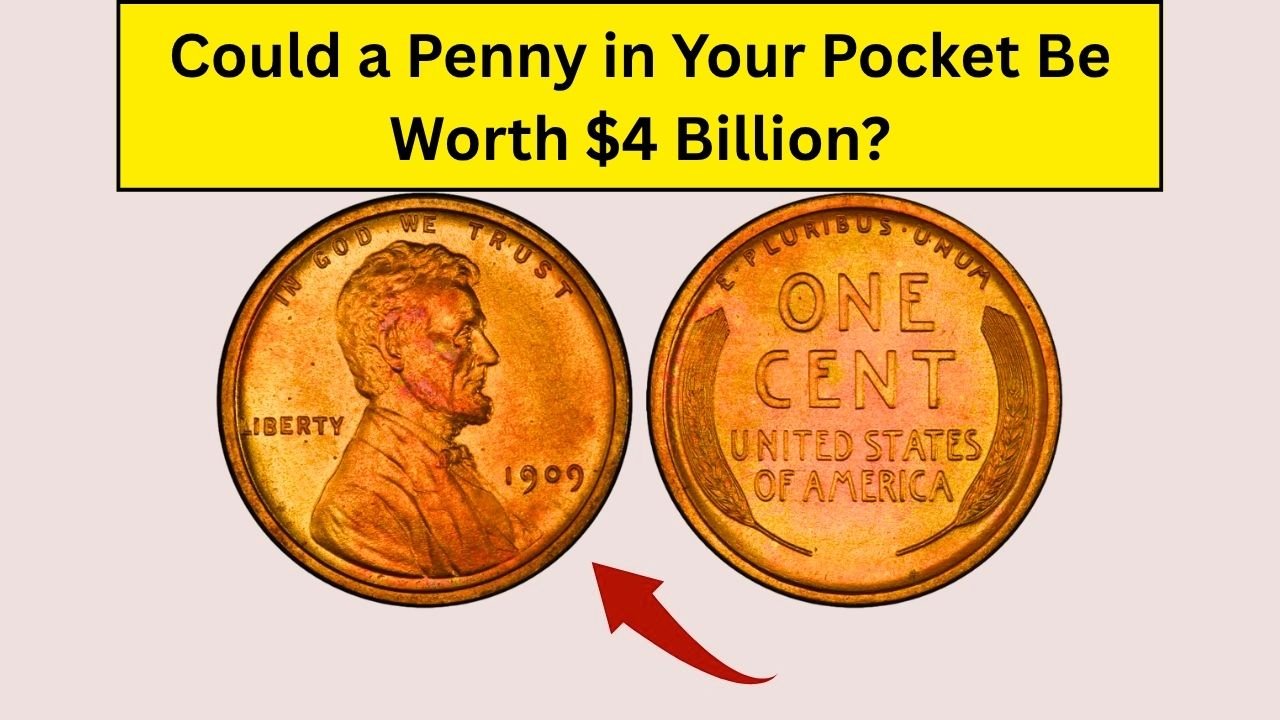In the world of coin collecting, few stories spark excitement like the Lincoln Wheat Penny. This small copper coin, first minted in 1909 to honor Abraham Lincoln’s 100th birthday, has a legendary status. Some rare versions are said to be worth millions, with wild claims suggesting a single penny could fetch nearly $4 billion. But is this true, and could one still be hiding in your change? Let’s dive into the history, the hype, and the reality of this iconic coin.
A Coin with a Rich History
The Lincoln Wheat Penny, designed by Victor David Brenner, was a groundbreaking coin. It was the first U.S. coin to feature a real person’s face instead of symbols like Lady Liberty. From 1909 to 1958, billions were made, showing Lincoln’s profile on the front and two wheat stalks on the back, earning its “Wheat Penny” nickname. These pennies saw America through wars, the Great Depression, and more. Most are worth just a few cents, but rare ones have collectors buzzing.
The Million-Dollar Mistake
The penny everyone’s talking about is the 1943 copper Lincoln Wheat Penny. During World War II, pennies were made of steel to save copper for the war. By mistake, a few copper pennies were struck in 1943, making them super rare. Only about 40 are known to exist. One sold for $1.7 million in 2010, and experts say a perfect one could be worth $2.3 million today. Claims of a $4 billion value, though, seem to be exaggerated, likely referring to the total value of all Wheat Pennies ever made, not one coin.
Other Rare Pennies to Watch For
The 1943 copper penny isn’t the only treasure. The 1944 steel penny, made when a few steel blanks were used by mistake, can sell for up to $500,000. The 1955 Doubled Die penny, where the front text looks doubled due to a minting error, is another hot find, fetching thousands. The 1909-S VDB penny, with the designer’s initials and a low mintage of 484,000, is also a collector’s dream. These coins show how small mistakes can mean big money.
How to Spot a Valuable Penny
- Look at the date and mint mark (a tiny letter like “D” or “S” under the date).
- Test with a magnet: Bronze pennies (like the 1943 copper) aren’t magnetic; steel ones (like 1944 steel) are.
- Check for doubling, especially on 1955 pennies.
- Don’t clean your coin—it can lower its value.
If you find something special, take it to a trusted coin grader like PCGS or NGC to confirm it’s real. Many fakes are out there, so be careful.
| Penny Type | Key Feature | Estimated Value |
|---|---|---|
| 1943 Copper Penny | Made of bronze, not steel | Up to $2.3 million |
| 1944 Steel Penny | Made of steel | Up to $500,000 |
| 1955 Doubled Die | Doubled text on front | Thousands |
| 1909-S VDB Penny | Designer’s initials, low mintage | Thousands |
The Hunt Continues
Finding a $2.3 million penny in your pocket is a long shot, but it’s not impossible. Wheat Pennies still pop up in circulation sometimes, and collectors love the thrill of the hunt. Social media buzz about a $4 billion penny has fueled excitement, but experts say there’s no proof for such a high value. Still, checking your change or old coin jars could uncover a gem. Whether it’s worth a cent or a fortune, each Wheat Penny carries a piece of American history. So, next time you see a penny, take a closer look—you might just strike gold.
